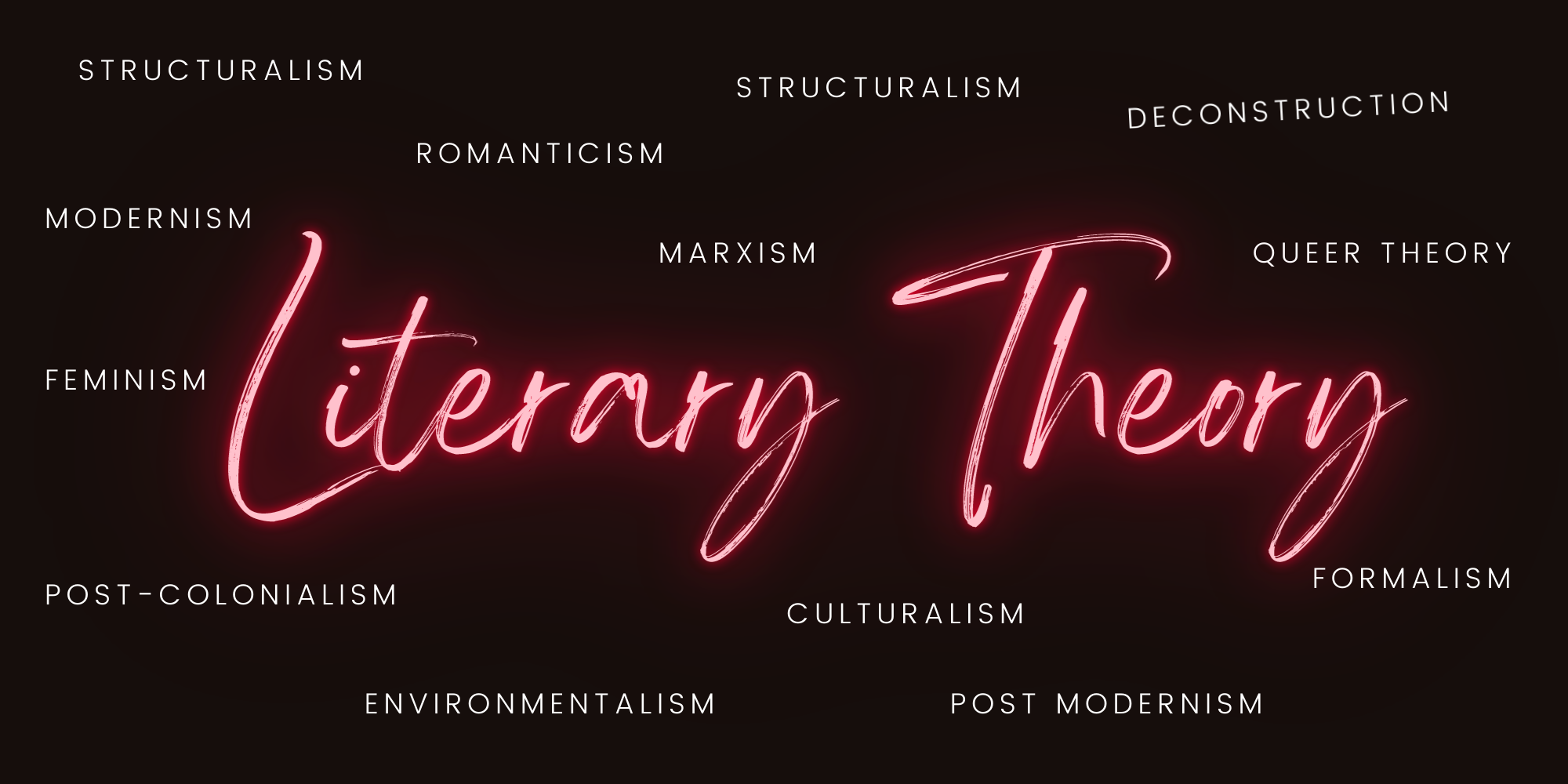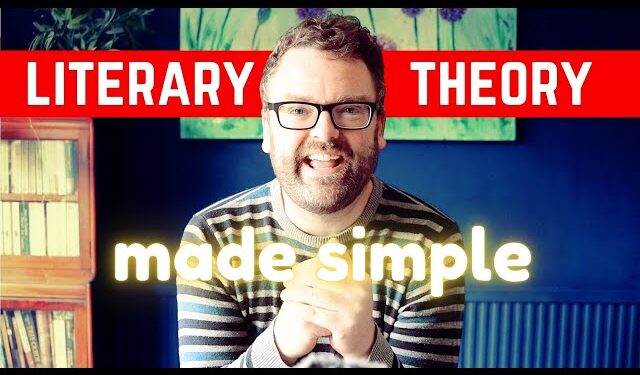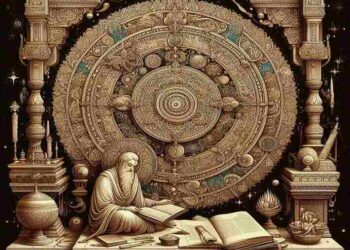Table of Contents
ToggleIntroduction
Literary Theories Simplified For Beginners For novices in particular, literary theory can frequently seem like an intimidating and complicated subject. It could be challenging to comprehend how literary theories work or why they are important given the diversity of approaches and schools of thinking. But for any student, critic, or fan who wants to interact with literature more deeply, it is essential to comprehend the basic ideas of literary theory.
By dissecting important ideas and offering concise illustrations of their literary applications, this guide aims to make literary theories easier for novices to understand. This article will demystify the various literary theories and explain how each one advances our comprehension of texts, regardless of whether you’re a student learning about literary theory for the first time or someone trying to hone your critical reading abilities.
1. What Is Literary Theory?
Understanding what literary theory is is crucial before delving into the various kinds of literary theories. Scholars and critics utilize literary theory as a collection of frameworks or concepts for interpreting, analyzing, and assessing literature. It gives readers the means to investigate texts’ deeper meanings, comprehend the historical and cultural settings in which they are composed, and evaluate the ideals and ideologies that influence literature.
While literature itself consists of the works—novels, poems, plays, and more—literary theory provides the lenses through which we analyze these works. It helps us move beyond just “what happens” in a text and instead asks questions like “why does this happen?” and “what does this reveal about society, culture, or human nature?”
Read More
2. Key Literary Theories Explained
Here we will break down some of the most common and influential literary theories, providing simplified explanations and examples for each.
2.1 Formalism (New Criticism)
Overview: Formalism, also known as New Criticism, focuses purely on the text itself, disregarding outside factors such as author biography, historical context, or reader responses. The central idea of formalism is that the text has intrinsic meaning, and this meaning can be uncovered through careful analysis of its structure, language, and literary devices.
Key Features:
- Emphasizes close reading, focusing on the language, imagery, symbolism, and form of the text.
- Investigates how elements like plot structure, rhyme, meter, and narrative techniques contribute to the overall meaning.
Example: A formalist reading of The Great Gatsby might focus on how Fitzgerald’s use of symbolism (such as the green light or the eyes of Dr. T.J. Eckleburg) contributes to the novel’s themes of the American Dream and the moral decay of society.
Why It Matters: Formalism highlights the importance of the text itself, encouraging readers to appreciate the literary craft and the power of language.
2.2 Marxist Criticism
Overview: Marxist criticism examines literature through the lens of social class, power dynamics, and economic forces. This theory is based on the ideas of Karl Marx, who argued that all aspects of society—including literature—are influenced by the material conditions of life and the economic structures of the time.
Key Features:
- Focuses on class struggle, the distribution of wealth, and the influence of capitalist systems on social relations.
- Analyzes how texts reflect or challenge social inequalities.
Example: A Marxist reading of Charles Dickens’ A Tale of Two Cities might explore the divide between the aristocracy and the working class, examining how the novel critiques the oppressive nature of wealth and class hierarchies.
Why It Matters: Marxist criticism reveals the underlying power dynamics in literature, encouraging readers to consider how economic and social factors shape characters and narratives.
2.3 Feminist Criticism
Overview: Feminist criticism examines literature from the perspective of gender, focusing on the roles, representations, and power relations between men and women. This theory is concerned with how literature reflects or perpetuates patriarchal structures and explores how female characters are portrayed.
Key Features:
- Investigates the depiction of women in literature and how gender roles are reinforced or subverted.
- Analyzes the ways in which literature reflects the social and historical contexts of gender.
Example: A feminist reading of Jane Eyre might explore how Charlotte Brontë’s portrayal of the heroine challenges Victorian ideals of femininity and the limitations placed on women in 19th-century society.
Why It Matters: Feminist criticism helps readers identify and question gender biases in literature, while highlighting the importance of diverse and authentic female voices in storytelling.
2.4 Psychoanalytic Criticism
Overview: Psychoanalytic criticism is based on the theories of Sigmund Freud and later psychoanalysts, who suggested that literature can reveal unconscious desires, anxieties, and conflicts. This approach emphasizes the psychological motivations of characters, as well as the author’s subconscious influences.
Key Features:
- Explores the unconscious mind, dreams, repressed memories, and the Oedipus complex.
- Investigates characters’ relationships, especially those that reveal deeper emotional or psychological undercurrents.
Example: A psychoanalytic reading of Hamlet might explore Hamlet’s relationships with his mother, Gertrude, and his father’s ghost, examining the psychological tension that arises from repressed feelings and unresolved grief.
Why It Matters: Psychoanalytic criticism provides a deeper understanding of human behavior, revealing how internal conflicts and desires shape characters and narratives.
2.5 Postcolonial Criticism
Overview: Postcolonial criticism focuses on the effects of colonialism and imperialism on literature and culture. It examines the power dynamics between colonizers and the colonized, often highlighting the struggles of marginalized voices and the legacies of colonial rule.
Key Features:
- Analyzes how colonial powers have shaped the identities, cultures, and histories of colonized peoples.
- Focuses on themes like hybridity, displacement, and resistance.
Example: A postcolonial reading of Heart of Darkness by Joseph Conrad might explore how the novel reflects colonial exploitation and the dehumanization of both the colonizers and the colonized.
Why It Matters: Postcolonial criticism helps readers understand the lasting impact of colonialism, offering insights into the complexities of cultural identity, power, and resistance.
2.6 Queer Theory
Overview: Queer theory examines literature through the lens of sexuality and gender, focusing on non-normative sexualities and identities. It challenges traditional notions of gender and sexuality, exploring how these concepts are socially constructed and represented in literature.
Key Features:
- Focuses on how LGBTQ+ identities are portrayed in literature.
- Analyzes the fluidity of gender and sexuality and challenges binary thinking (male/female, heterosexual/homosexual).
Example: A queer theory reading of The Picture of Dorian Gray might explore Dorian’s relationships with other men and how his actions subvert conventional ideas of masculinity and sexual identity.
Why It Matters: Queer theory opens up conversations about diverse sexual identities and encourages readers to consider how literature constructs or deconstructs societal norms around gender and sexuality.

3. How to Apply Literary Theories to Texts
Understanding literary theory is one thing; applying it to texts is another. Here’s a simplified guide to help you apply these theories to literature:
3.1 Step 1: Select a Literary Work
Choose a text that interests you. It could be anything from a classic novel to a contemporary poem, depending on your area of focus.
3.2 Step 2: Choose a Literary Theory
Decide which literary theory or theories you’d like to apply. Keep in mind that some texts may lend themselves more easily to certain approaches. For example, a novel focused on class struggle may be ideal for a Marxist reading.
Read More
3.3 Step 3: Identify Key Themes and Elements
Seek out plot points, characters, symbols, and themes that relate to the hypothesis. For example, feminist critique focuses on the representation of female characters, whereas psychoanalytic criticism emphasizes the psychological motivations of characters.
3.4 Step 4: Analyze and Interpret
Using the chosen literary theory, analyze the text. Examine how it aligns with the principles of the theory, and interpret the meaning of various literary elements. Make sure to support your interpretations with textual evidence.
3.5 Step 5: Draw Conclusions
Finally, draw conclusions based on your analysis. How does the theory enhance your understanding of the text? How does it shed light on new meanings, themes, or interpretations?

Conclusion
Although it may appear overwhelming at first, literary theory is a vital tool for any serious reader or critic, offering a wide range of tools for analyzing literature. Beginners can interact with texts on a deeper level and learn about the motivations of characters, the social situations in which works were written, and the wider meanings of themes by grasping the fundamentals of various literary theories.
Literary theories are vital resources that provide fresh perspectives on literature, whether you’re reading for enjoyment or getting ready for an academic analysis.
Read More
FAQ
1. What’s the difference between literary theory and literary criticism?
Literary theory is the framework or lens through which we analyze literature, while literary criticism refers to the actual analysis and interpretation of literary texts. Literary criticism can be guided by literary theory but isn’t limited to it.
2. Can I use more than one literary theory to analyze a text?
Yes, it is possible to use multiple literary theories to analyze a text. In fact, doing so can provide a richer, more nuanced understanding. For example, you could use feminist and postcolonial theories together to analyze a text’s depiction of gender and colonialism.
3. Do I have to agree with the theory I use?
No, you don’t necessarily have to agree with the theory. Literary theories are tools that help us interpret texts, and you can use them to critique and challenge the ideas they present. Feel free to apply the theory critically, while keeping in mind that it’s a lens for analysis, not an absolute truth.
4. How can I know which literary theory to choose for a specific text?
It’s often helpful to consider the themes, context, and characters of the text. For example, if a novel focuses heavily on economic disparities, a Marxist reading might be fitting. If the text addresses issues of identity and gender, a feminist or queer reading could provide valuable insights.
5. Do I need to know all these literary theories to be a good reader?
While it’s not strictly necessary to be familiar with all literary theories, understanding a few key theories can enhance your reading experience and deepen your understanding of literature. The more theories you explore, the more tools you have to interpret and analyze texts.
















